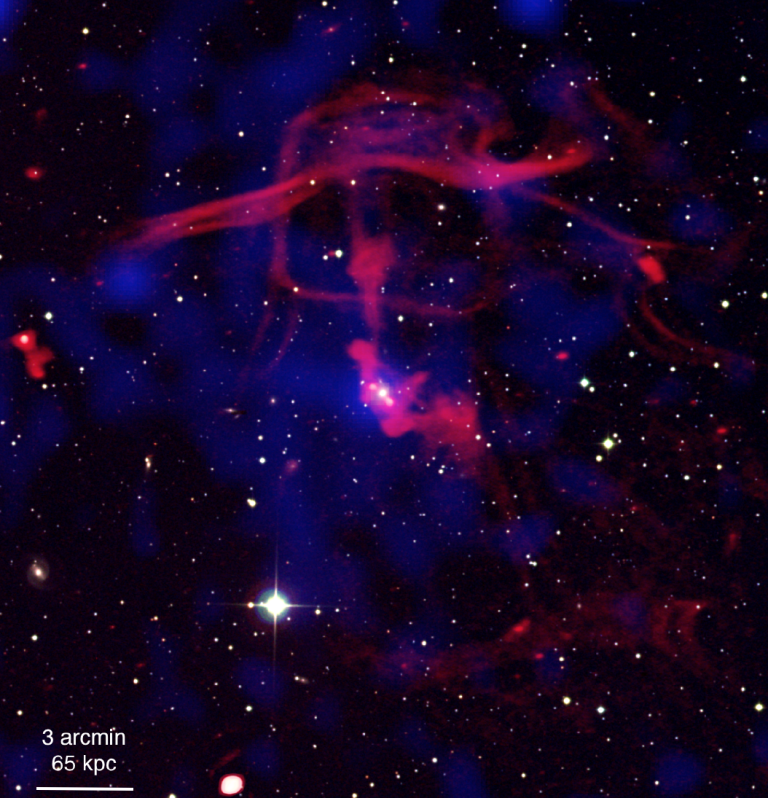An international team of researchers, including astronomers from ASTRON, SRON and Leiden University has for the first time observed the full extent of the evolution of hot gas produced by an active black hole. Eventually this hot gas encompasses a much larger area than previously thought and impacts objects residing at great distances. Publication in Nature Astronomy.
pairs of bubbles
The findings come from studies of Nest200047, an otherwise innocuous group of galaxies about 200 million light years away that houses a spectacular black hole in the galaxy at its centre. The black hole is actively accreting any surrounding matter and releasing powerful streams of particles as a result. These particles have formed pairs of bubbles and filaments of hot gas that have gradually drifted away from the black hole. Reaching distances of hundreds of thousands of lightyears and impacting anything that stands in their way.
influence on hundreds of other galaxies
Timothy Shimwell (ASTRON), co-author of the study, is thrilled with the result. ‘For many years researchers have been trying to figure out how much of the surrounding area a black hole can influence. The images we have created of this incredible system show that the answer is: astonishingly large. The black hole doesn’t just influence the host galaxy but instead it impacts a vast intergalactic environment which may contain hundreds of other galaxies and it will affect aspects such as the rate at which stars form in those galaxies.’
LOFAR and eROSITA
Observations that made this research possible were conducted by the Dutch LOFAR radio telescope and the eROSITA space telescope. The research is published in Nature Astronomy by an international team of astronomers, including Aurora Simionescu from SRON.
Publication
M. Brienza, T. W. Shimwell, F. de Gasperin, I. Bikmaev, A. Bonafede, A. Botteon, M. Brüggen, G. Brunetti, R. Burenin, A. Capetti, E. Churazov, M. J. Hardcastle, I. Khabibullin, N. Lyskova, H. J. A. Röttgering, R. Sunyaev, R. J. van Weeren, F. Gastaldello, S. Mandal, S. J. D. Purser, A. Simionescu & C. Tasse, ‘A snapshot of the oldest active galactic nuclei feedback phases’, Nature Astronomy



